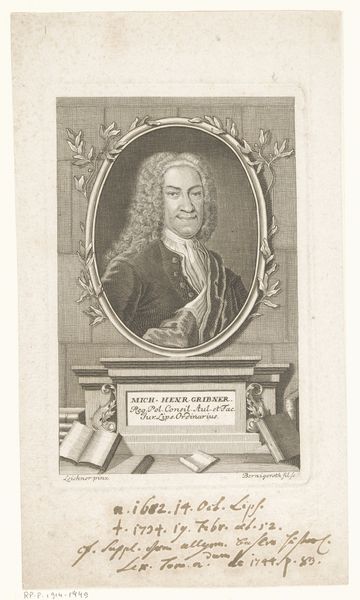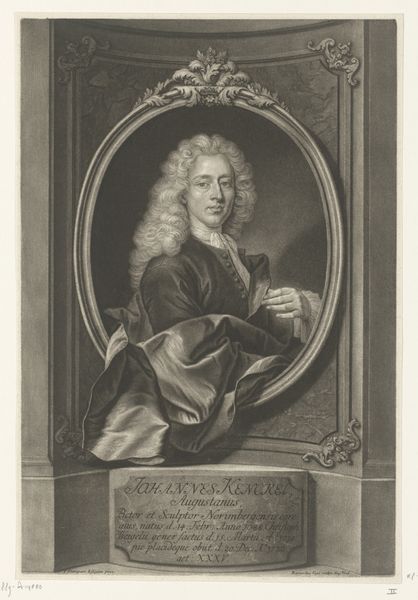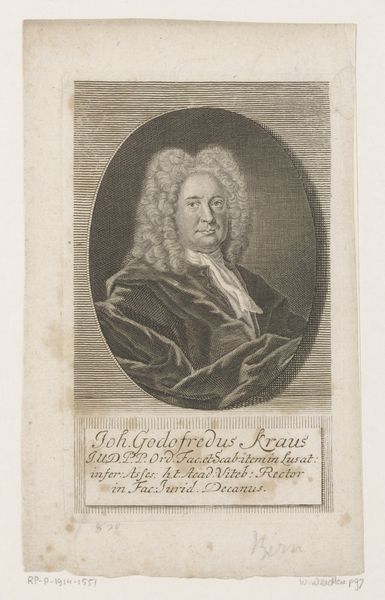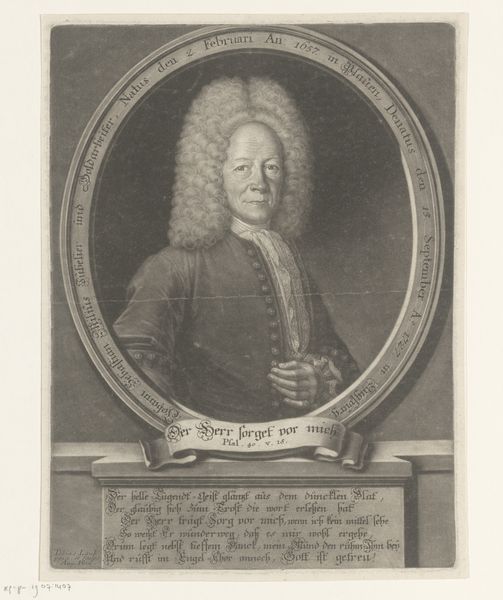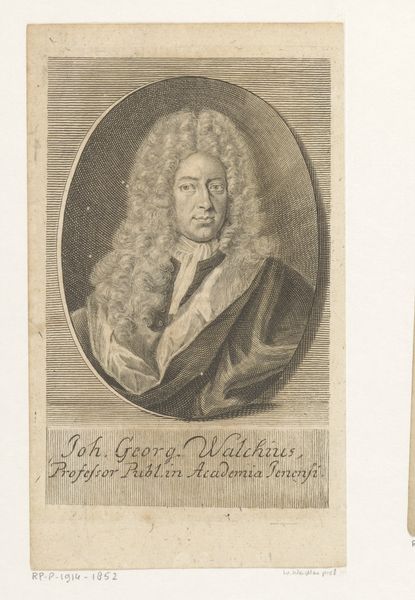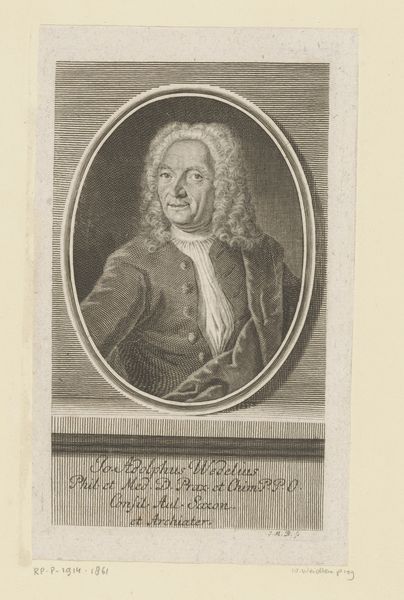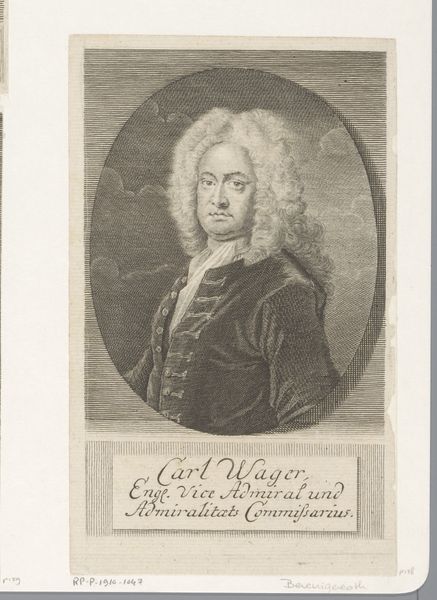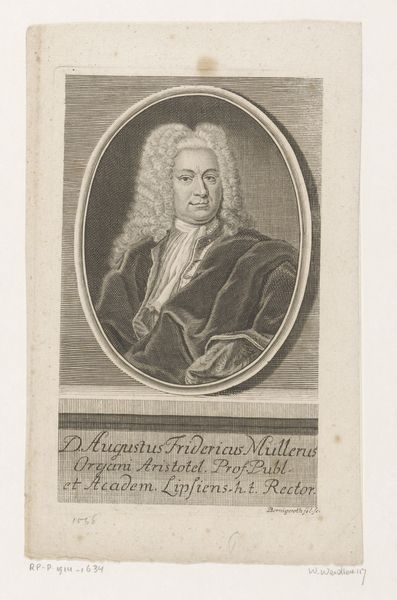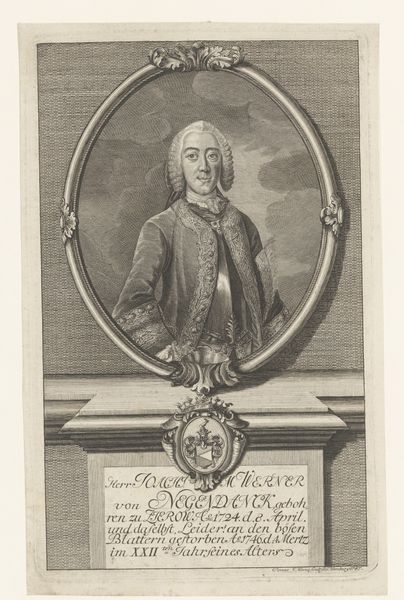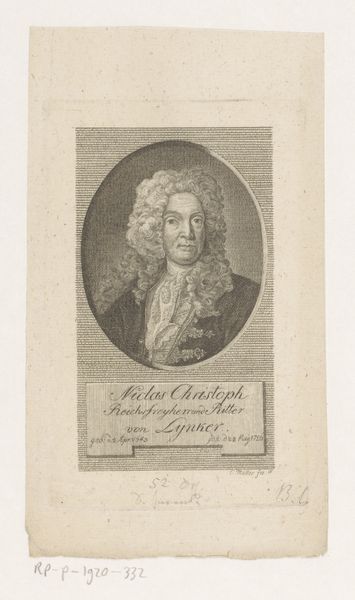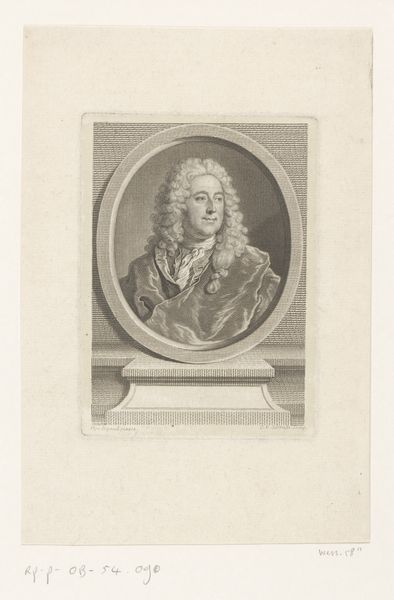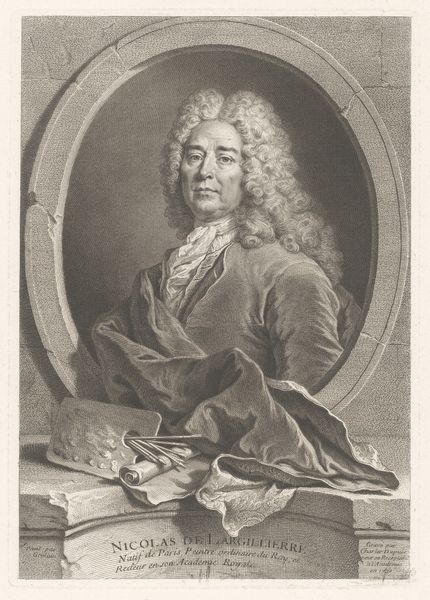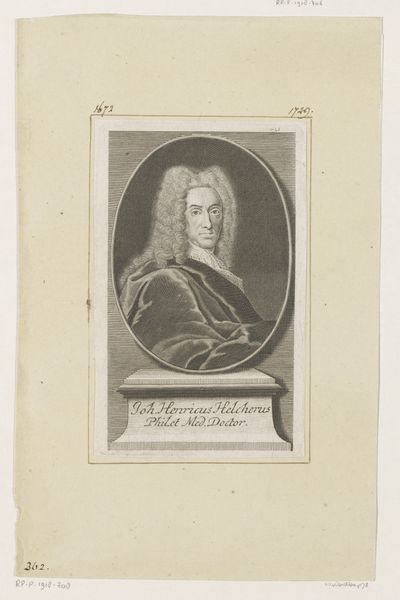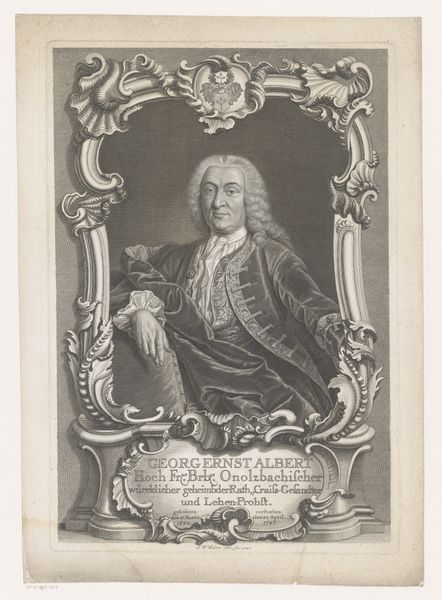
print, engraving
#
portrait
#
baroque
# print
#
old engraving style
#
history-painting
#
engraving
Dimensions: height 155 mm, width 98 mm
Copyright: Rijks Museum: Open Domain
Curator: It's captivating how meticulously engraved lines can convey such personality. This piece, created by Johann Martin Bernigeroth in 1733, presents "Portret van Adam Friedrich Glafey," currently held in the Rijksmuseum collection. Editor: My first impression is the level of detail achieved with what appears to be just lines. There is almost a sense of movement and certainly considerable personality emanating from it. Curator: Bernigeroth clearly understood how to exploit the burin to its full potential. I wonder what significance Glafey's position as "Hoffrath und Archivarius" held in society and how his official duties influenced Bernigeroth's artistic decisions in terms of conveying authority and status? Editor: Exactly! Engravings like this were commodities, objects intended for widespread distribution to communicate very specific messages. Notice the heavy wig and official dress: these weren't just personal choices but signifiers meant to project an image, and the success of the piece resides in its role as a political tool as much as its artistic merit. Curator: The consistent weight of the line and precision used suggests a calculated approach geared toward efficient and effective reproduction. One imagines the intense labor that goes into producing multiple copies of the image. I mean, this portrait functioned as a reproducible form of currency, wasn't it? Editor: Yes, circulating his image among specific social circles would enhance his recognition and potentially his political and social influence. Bernigeroth’s print thus plays a pivotal role in shaping the perception of its subject and its widespread consumption reinforces ideas about hierarchy and the social position of influential officials in society. Curator: Analyzing the tools, labor, and reproduction helps to reveal the mechanics behind the promotion of powerful individuals through such printed portraits. The engraving highlights how social dynamics were actively manufactured and distributed through material goods such as prints. Editor: Indeed. Thinking about who would have commissioned and consumed it is equally important, highlighting how institutions and networks fostered particular political narratives through images, which helped people understand their role within complex societal hierarchies.
Comments
No comments
Be the first to comment and join the conversation on the ultimate creative platform.
